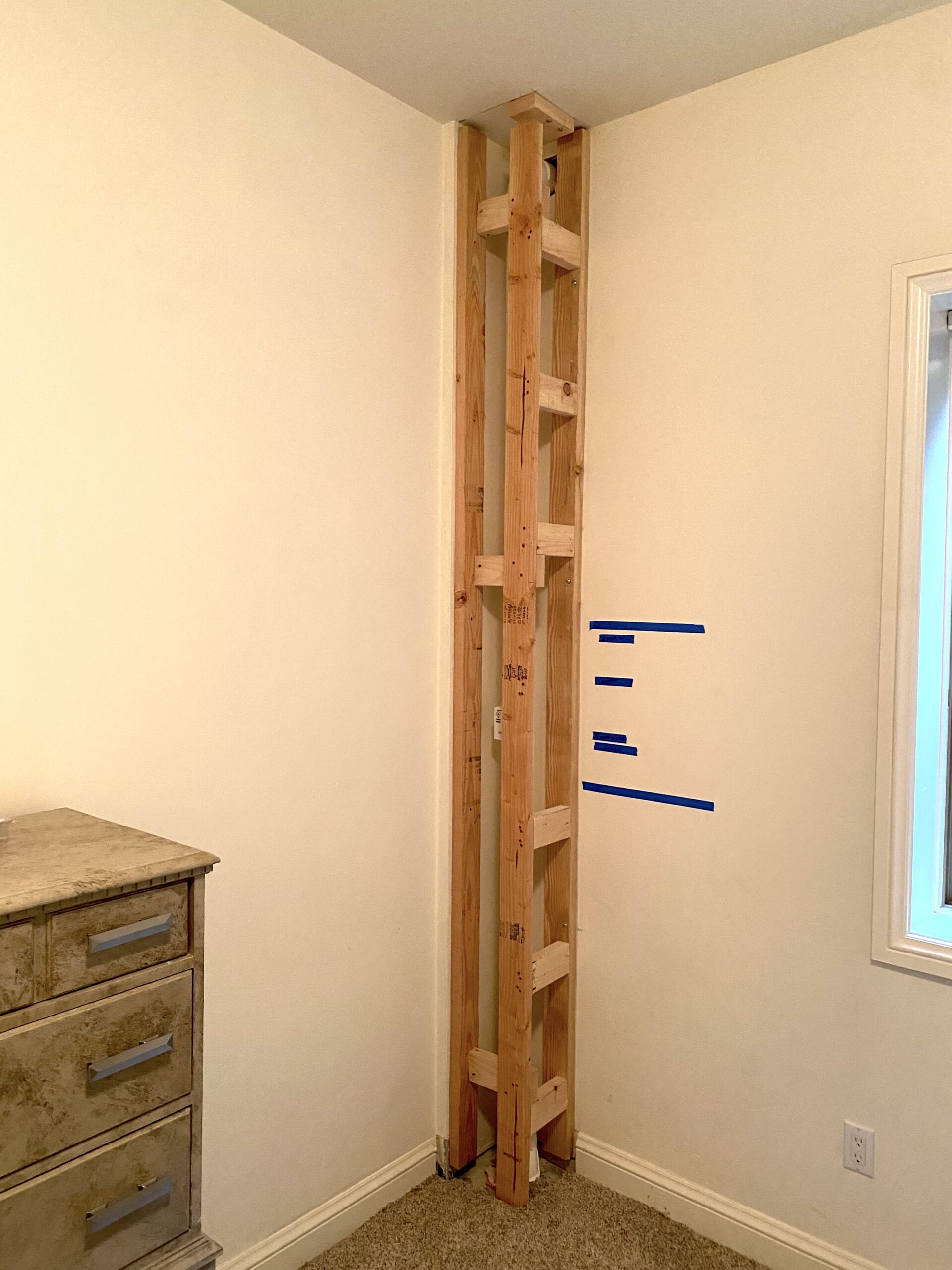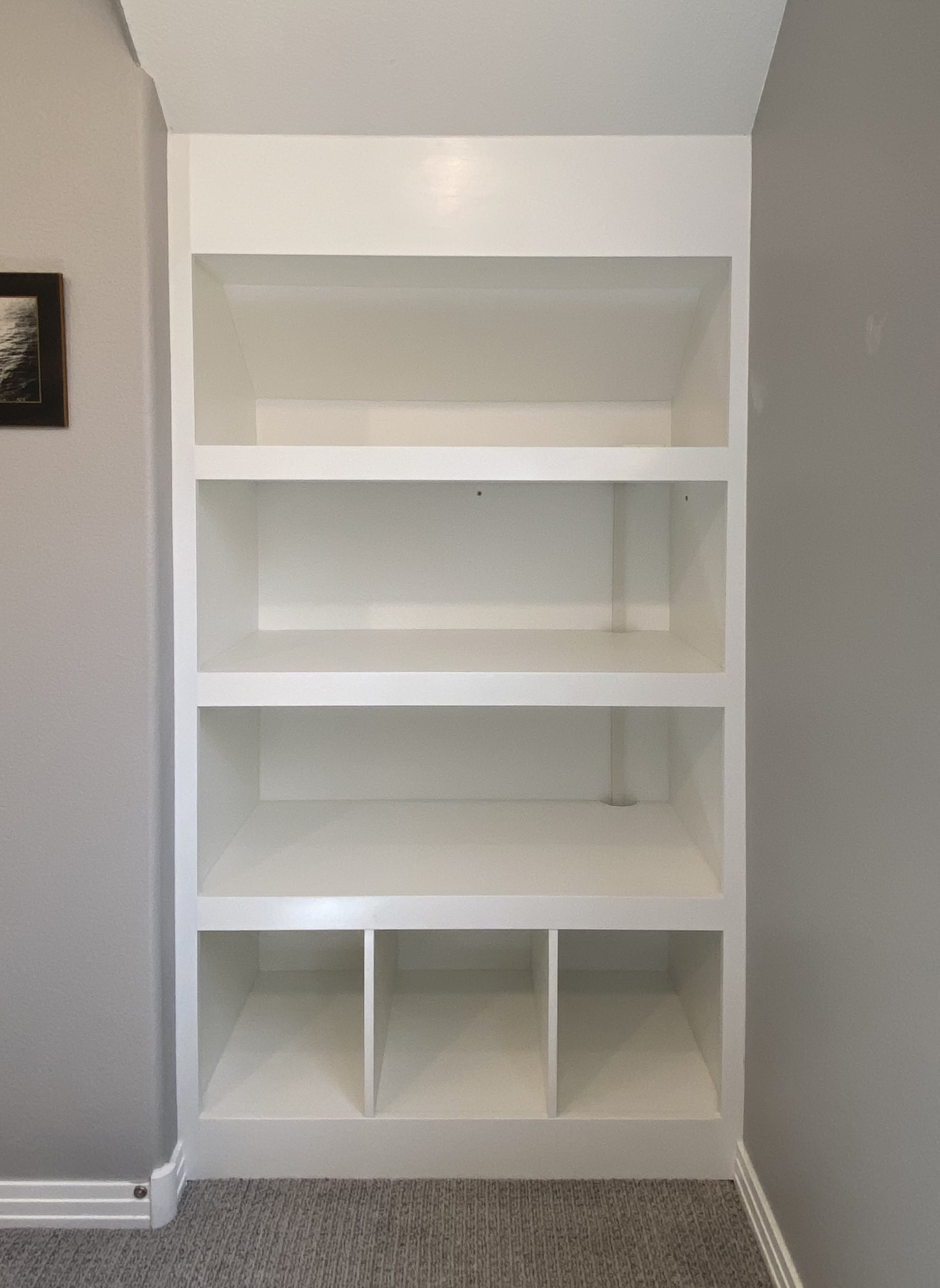Carpentry / Woodworking / Built-Ins in Denver, CO


Advantages of Custom Built-Ins
Adding custom-made built-ins to your home offers numerous advantages:
- Maximized Space
Efficiently utilizes available space, especially in smaller or awkwardly shaped areas.
- Increased Storage
Provides tailored storage solutions that meet your specific needs, reducing clutter and organizing your home.
- Enhanced Aesthetic Appeal
Adds a polished, cohesive look to your interior design, often becoming a focal point in the room.
- Personalization
Allows you to design features that match your style, preferences, and functional requirements.
- Improved Functionality
Creates multifunctional spaces, such as built-in desks, bookcases, or entertainment centers, optimizing the usability of your home.
- Increased Property Value
Custom built-ins are often seen as a premium feature, which can enhance the value of your home.
- Longevity and Durability
Built-ins are typically made with high-quality materials and craftsmanship, offering lasting durability compared to mass-produced furniture.
- Seamless Integration
Blends seamlessly with the architectural design of your home, maintaining a consistent and harmonious look.
- Customization for Unique Spaces
Perfect for irregular or underutilized spaces, like alcoves or corners, turning them into functional and attractive areas.
- Reduced Need for Additional Furniture
By incorporating storage and functional elements into the structure, you can minimize the need for extra furniture pieces, creating a cleaner, more open space.
How to Get Started with Carpentry / Woodworking
You may not want to hire a handyman in Denver right now. If you want to begin learning how to create your own built-ins, here is a getting started guide. However, keep in mind that while some projects are DIY-friendly, complex items like built-ins can be dangerous projects to take on yourself! Such projects are best left to professionals.
1. Set Up Your Workspace
- Choose a Suitable Space: Ideally, find a dedicated area like a garage, shed, or basement. Ensure it’s well-ventilated and has adequate lighting.
- Organize Your Space: Arrange your tools and materials for easy access. Consider setting up workbenches, shelving, and storage for your tools and supplies.
- Safety First: Ensure your workspace has proper safety equipment, like a fire extinguisher, first aid kit, and eye and ear protection.
2. Gather Essential Tools
Start with basic tools that will allow you to tackle a variety of projects:
- Measuring and Marking Tools: Tape measure, combination square, carpenter’s pencil, and marking gauge.
- Cutting Tools: Handsaw (crosscut and rip), jigsaw, or circular saw.
- Shaping Tools: Chisels, block plane, and rasp.
- Fastening Tools: Claw hammer, mallet, screwdrivers, and a power drill with a set of bits.
- Sanding and Finishing Tools: Sandpaper (various grits), sanding block, and a wood finish (like oil, stain, or varnish).
- Clamps: Various sizes to hold pieces together while working or glue sets.
- Workbench: A sturdy surface to work on, which can be as simple as a heavy table or a dedicated workbench.
3. Learn Basic Techniques
Start with fundamental woodworking skills:
- Measuring and Marking: Accurate measurements are crucial. Learn to use a tape measure and square to mark wood before cutting.
- Cutting Wood: First consult with a professional for guidance. Then practice using handsaws or a jigsaw. Start with straight cuts and progress to more complex angles and curves.
- Joinery: Learn simple joints like butt joints, lap joints, and miter joints. These are the foundation of most woodworking projects. Joint guides can be found on YouTube.
- Sanding and Finishing: Sand your workpieces to smooth out rough edges. Learn how to apply finishes to protect the wood and enhance its appearance.
4. Start with Simple Projects
Begin with straightforward projects to build your skills and confidence:
- Cutting Board: A simple, flat project that teaches measuring, cutting, and finishing.
- Bookshelf or Box: A basic structure with right angles, perfect for practicing cutting and joining.
- Birdhouse or Planter Box: Small, simple projects that can be completed in a short time and make great gifts.
5. Learn from Resources
- Books and Magazines: Find beginner-friendly woodworking books or subscribe to magazines that offer project ideas and tips.
- Online Tutorials: YouTube has countless woodworking channels offering step-by-step guides, tips, and project ideas for beginners.
- Join a Woodworking Community: Online forums, local woodworking clubs, or classes can provide support, advice, and camaraderie.
6. Focus on Safety
- Wear Safety Gear: Always wear safety glasses, ear protection, and a dust mask when working.
- Understand Tool Safety: Read manuals, consult with professionals, and watch tutorials on how to safely use each tool. Keep your tools sharp and in good condition to prevent accidents.
- Work Smart: Always work in a well-lit area, keep your workspace clean, and never rush through a project.
7. Invest in Quality Materials
- Start with Softwoods: Such as pine, which is easier to work with and more forgiving for beginners.
- Buy in Small Quantities: As a beginner, start with small amounts of wood until you’re comfortable with your skills.
- Consider Scraps: Practice on scrap wood to develop your techniques without wasting expensive materials.
8. Build Your Skills Gradually
- Take on More Complex Projects: As you gain confidence, tackle more challenging projects that involve advanced joinery, carving, or inlays.
- Experiment with Different Woods: Try working with hardwoods like oak or walnut, which offer different challenges and aesthetics.
- Expand Your Tool Collection: As your skills grow, invest in more specialized tools like a router, table saw, or band saw.
9. Practice, Patience, and Perseverance
- Expect Mistakes: Mistakes are a natural part of the learning process. Use them as opportunities to learn and improve.
- Take Your Time: Woodworking is an art that requires patience. Don’t rush through your projects; focus on precision and quality.
10. Enjoy the Process
- Celebrate Your Progress: Take pride in each project you complete, no matter how simple.
- Personalize Your Work: As you gain experience, start adding your own creative touches to projects, making them uniquely yours.
Woodworking is a journey that can bring great satisfaction and personal fulfillment. With practice, patience, and a willingness to learn, you may just be able to craft your own built-ins someday.
